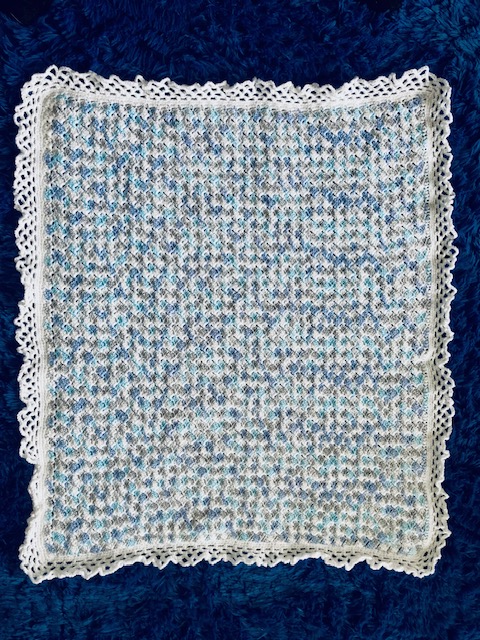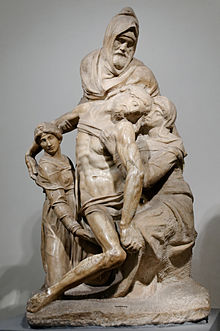
Imperfections can have pros and cons. I recently produced an imperfect baby blanket. As I finished crocheting it, I ran out of the variegated yarn with four shell stitches left to make. Rather than ripping out the last incomplete row, I used white, sparkling yarn to make those four shells. So, yes, my blanket is imperfect. Hopefully, no one will notice. A side benefit was that my sister taught me how to make a new border using that white yarn for a ruffle.
Beauty in Imperfections
I took comfort in the fact that the Navajo inserted a mistake on purpose as they wove blankets. Supposedly this was to honor their gods, who alone are perfect. For the same reason, the gorgeous ceilings in mosques have small irregularities. Japanese artists add imperfections in their work as a necessary ingredient called “wabi-sabi.” This could be asymmetry, roughness, or a blemish like a crack. People can find beauty in imperfections, which make things unique.
Flaws can also add value. Coins minted with an error and stamps printed with a mistake can be worth thousands of dollars.
Imperfect Bodies

Because we are the result of evolution, some features of our bodies are imperfect. For one example, we hiccup. When fish and amphibians first emerged on land, they needed gills for oxygen in water and lungs on land. In water they could close the entrance to the lungs. Sometimes when we take in air, ancient muscles close the entrance to our lungs.
Dimples are a defect in a muscle, but a charming defect. Beauty marks and freckles too are flaws, but some people find them attractive.
The Search for Perfection

At the age of 73, Michelangelo was working on a 10-year project: the Florentine Pieta, probably intended for his tomb. At one point, he was so dissatisfied either with his work or with a flaw in the marble that he hacked his masterpiece, breaking a leg. Later an assistant repaired it.
This reminded me of my favorite artist who illustrated some of my works. The publisher was not happy because it too her so long. She explained to me that when she woke up in the morning and looked at her work of the previous day, she didn’t like it and tossed it. Probably some pictures in her wastebasket excelled other artists’ work.
I also recall having an opportunity to use a potter’s wheel for the first time. I tried to make a dish as a Christmas gift for my parents. Every time I shaped the clay, something was wrong with it. I quit and left without any dish at all.
Perils of Being a Perfectionist
As from the previous examples, being a perfectionist has its flaws! It wastes time and energy. It also causes stress and anxiety. Fear of making a mistake can also stymie achievements, as in Michelangelo’s case. St. Teresa of Avila said, “He who makes no mistakes, makes nothing.”
Positive Results of Imperfections
Not achieving perfection keeps us humble. It protects us from having a big head and thinking we are better then other people. It may even make us realize that we need God’s help.
At times, good might result from failure. When a dish or vase is broken, the Japanese art of Kintsugi transforms it into something beautiful. The pottery is repaired with gold.

Imperfection can have surprising, good consequences. When I played five classical pieces for an audience of 176, I messed up every one of them despite having practiced for weeks. I made comments like, “You should have been here yesterday when I practiced.” “Am I making you nervous?” “Let’s try that again.” Afterwards people said I was the comic relief for the long program. They loved my personality. They thought I was hilarious. So the fiasco had its benefits.
The Imperfections of Saints
Saints were not all beautiful or handsome. They were not all smart or pleasant to be with. A old book is titled Saints with Tilted Halos. Saints (other than our Blessed Mother) were not morally perfect. St. Therese of Lisieux was sensitive and proud. St. Jerome had a temper, and he and St. Augustine traded mean letters. The apostles James and John argued about who would be the greatest in heaven.
St. Francis de Sales said, “We must not be disturbed at our imperfections, since for us perfection consists in fighting against them. How can we fight against them unless we see them or overcome them unless we face them.”
Jesus
To some people Jesus was a failure. No doubt he felt like one on some days—as when the apostles didn’t understand his lessons and when disciples walked away from him. The gossip in Nazareth was that he was out of his mind. Religious leaders said he was possessed and accused him of faults. Romans viewed him as an unsuccessful king. Regardless, he did save all humankind.
Lent: A Time for Aiming High
We have the next weeks to perfect ourselves when it comes to living as a follower of Jesus. It’s time to evaluate our lives, check on our virtues, confess our sins, and begin again. Besides, or instead of, giving up chocolate or donuts, we might focus on eliminating one or more faults or adopting a practice (like extra time devoted to prayer) to bring us closer to holiness.
If you haven’t decided on a Lenten practice yet, here are some ideas from the Sisters of Notre Dame:


May you have a successful Lent, even though you might slip up a little!
On YouTube there are dozens of videos about failing. Here is one:
• When have you profited by not being a perfectionist?
• When has a failure led to something good?









2 Responses
Kathleen, I am with you–that yarn seems to end too soon, but, like you, I can usually find a way and that is OK with me.
It is so frustrating! Sometimes I rip out the last row.